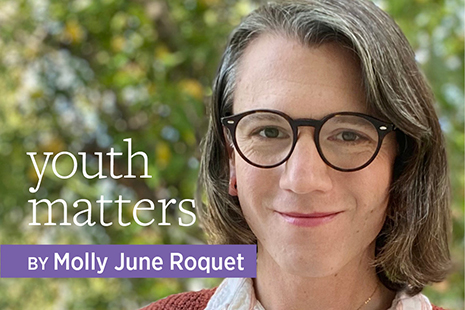
Around the globe, networked technology is amplifying deadly misinformation, monetizing surveillance, fueling hatred, and facilitating antidemocratic violence. Digital literacy education has never been more vital.
But instead of helping students understand these phenomena, digital literacy curricula tend to focus on individual behavior and responsibilities: Do protect your private information. Don’t cyberbully your classmates. Do use citations. These lessons often aim to correct perceived misbehavior or build academic skills but do little to raise students’ awareness of the complex social issues around technology.
Frustrated by this disconnect, I went looking for a different approach. I found hope and inspiration in scholarship on critical information literacy and other critical frameworks in education. While I certainly don’t have all the answers, I would like to share some ideas on what critical digital literacy looks like and how it informs my teaching.
Critical digital literacy is the ability to seek context, imagine alternatives, and build agency to create change. This approach is not a replacement for skills instruction; rather, it can be added to any lesson.
Seeking context means that students understand technologies as products of historical, social, political, and economic systems and moments. Students should also recognize that systemic oppression is re-created in tools that might seem neutral at first glance. When seeking context, students ask questions, consider impacts, and look beyond the superficial.
For example, instead of just telling my middle school students that cyberbullying is wrong, I invite them to investigate how social media companies tweak algorithms to maximize engagement and profits, with some choosing to amplify vitriol and misinformation. Students can reflect on their own online experiences and discuss how they would change platforms to make the internet a less hostile place.
Instead of being cheerleaders for new technologies, librarians should model a critical approach.
Imagining alternatives means that students think beyond the current moment and imagine ways that technology could better serve humanity. It’s important to create space for students to be critical thinkers. When introducing new tools, I ask students what changes they would make to improve their experience. Building on their ideas, I might introduce deeper questions: What would this look like if it wasn’t funded by advertising? What data is being collected and why? Other times, I ask students to imagine something completely new. For example, If Google disappeared tomorrow, what tool could you develop to navigate the internet?
Building agency to create change means that students understand the ways technologies evolve and think about how to work toward those changes. Too often, we discuss technology as if it has a predetermined destiny beyond our control. Media celebrates individual entrepreneurs, but technologies are often shaped by groups of everyday people: users switching services, citizens advocating for regulations, employees working for change within an organization. Our students are the activists, programmers, and CEOs of tomorrow; it’s important that they start thinking about solutions. I ask students to look at examples of digital activism and dig into the history of consumer technology, seeing how companies and technologies rise, fall, and change in response to economic, social, and political pressures.
Should we teach younger kids to use technologies before we discuss complicated social issues? As challenging as it is, we must do both. Even our youngest students are surveilled and influenced by networked technology, and they are fully capable of expressing what they do or do not like about an app or website.
Instead of just being cheerleaders for new technologies—or books, for that matter—librarians should model a critical approach in every part of school library service, from collection development to teacher collaboration. Everything we do should empower our communities to create change.


